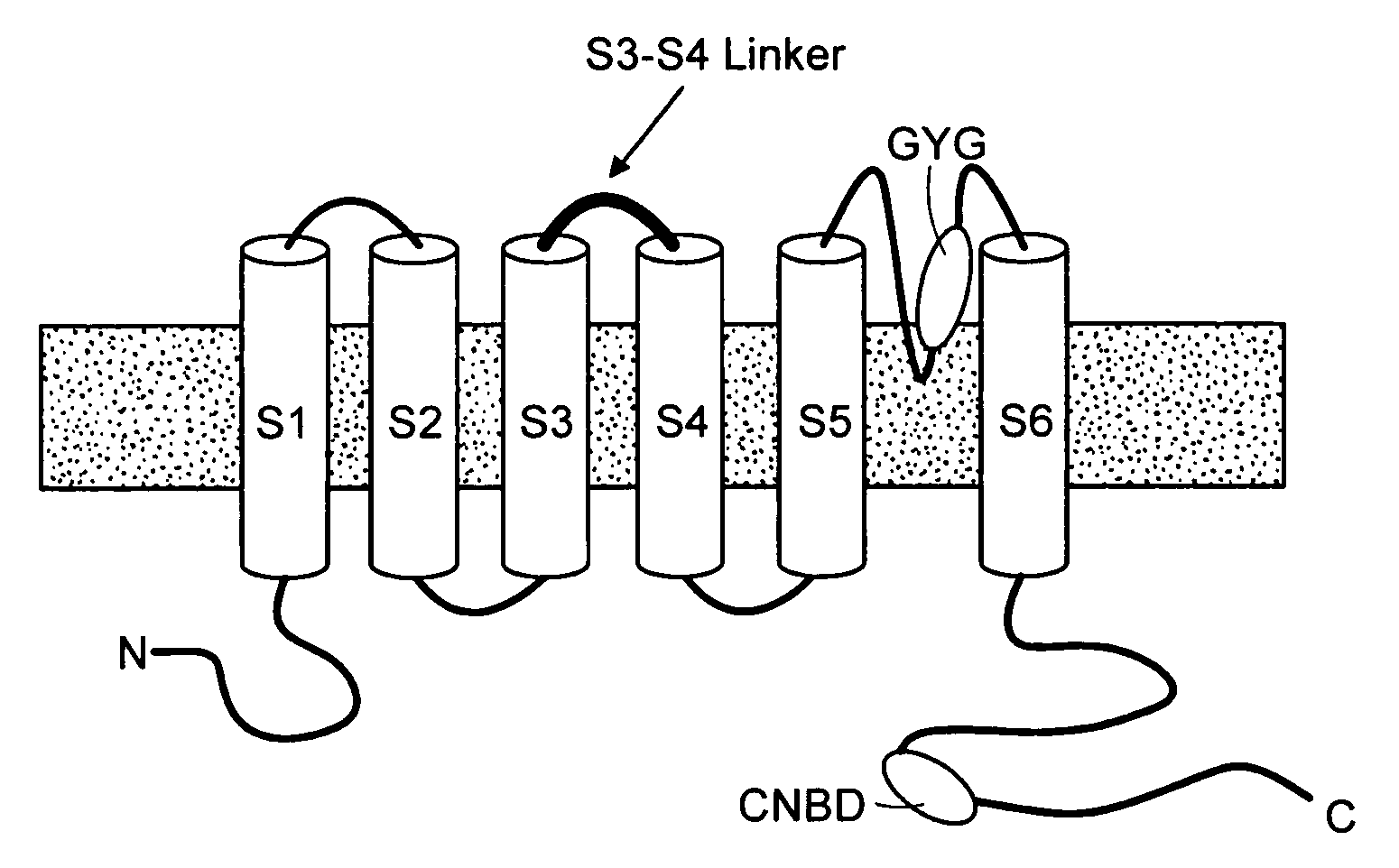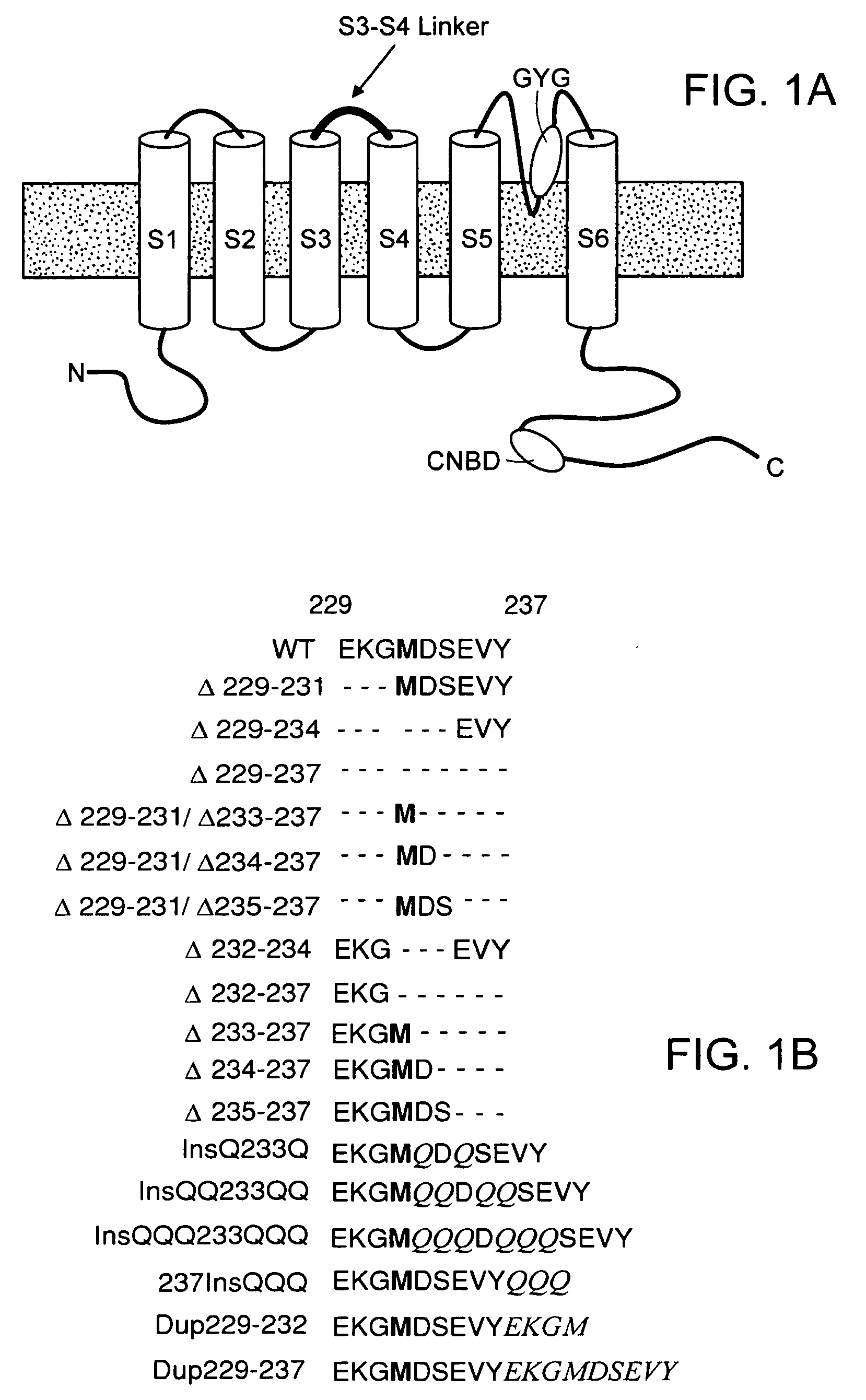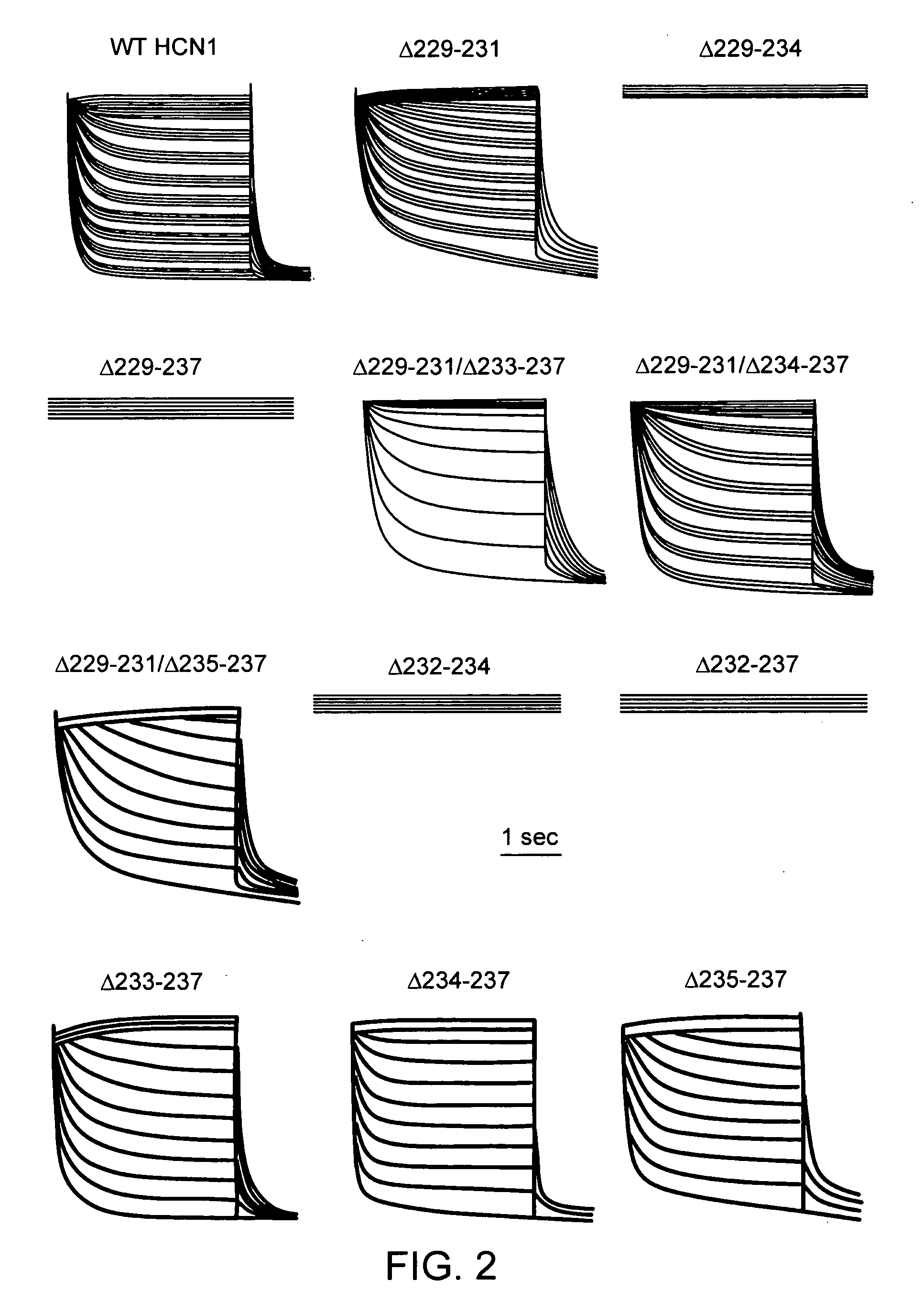Modulation of bio-electrical rhythms via a novel engineering approach
- Summary
- Abstract
- Description
- Claims
- Application Information
AI Technical Summary
Benefits of technology
Problems solved by technology
Method used
Image
Examples
example 1
Expression of an Engineered If in Ventricular Cardiomyocytes
[0060]We first created the recombinant adenoviruses Ad-CGI and Ad-CGI-HCN1-ΔΔΔ to overexpress the green fluorescent protein (GFP) and the engineered HCN1 construct EVY235-7ΔΔΔ, respectively. HCN1-EVY235-7ΔΔΔ channels, whose S3-S4 linker has been shortened by deleting residues 235-237, was chosen because they open more readily (with a ˜20 mV depolarizing shift of activation V1 / 2) than any of the wild-type HCN1-4 isoforms when expressed in heterologous expression systems23,24. Therefore, we conjectured that overexpressing EVY235-7ΔΔΔ channels alone in cardiomyocytes would sufficiently mimic the heteromultimeric native nodal If without having to simultaneously express or manipulate multiple HCN isoforms.
[0061]FIG. 9 shows that IK1(A and E), which could be completely blocked by 1 mM Ba2+ (B and F) was robustly expressed in control (non- or Ad-CGI-transduced) adult guinea pig left ventricular (LV) cardiomyocytes (n=36). For LV c...
example 2
Induced Automaticity by HCN-Encoded If Overexpression
[0062]Shown in FIG. 10A (left) is a typical control ventricular cell (same from FIGS. 9A-B) that was normally electrically-quiescent with no spontaneous activity. The resting membrane potential, RMP, was −76±5 mV (n=7). Upon injection of a stimulating current (˜0.8 nA for 5 ms), the same cell generated a single action potential (AP), indicating normal excitability. Addition of 1 mM Ba2+ to block IK1 destabilized the normal RMP and subsequently resulted in spontaneous firing with an average cycle length of 689±132ms that was ˜3-fold slower than that of guinea pig nodal cells (FIG. 10A, right) similar to that induced by IK1 genetic suppression (personal communication with Dr. H B Nuss). Collectively, these observations indicate that although IK1 suppression unleashes latent pacemaker activity of ventricular cardiomyocytes, it is insufficient to reproduce the normal frequency of endogenous nodal pacing.
[0063]We next investigated the ...
example 3
The HCN Approach Functionally Substitutes an Electronic Device In Vivo
[0064]To better test the functional efficacy and therapeutic potential of our gene-based approach in vivo, we next switched to a large animal model. Swines were chosen because they have anatomy and baseline sinus rate (78±14 bpm) similar to those of humans. We first developed a swine model of the SSS by ablating the SA node to cause sinus dysfunction (FIG. 11A-B). To prevent asystole or bradycardias after ablation, we implanted a dual-chamber electronic pacemaker with one electrode positioned at the high anterolateral wall of the RA and another at the right ventricular apex. Electrocardiogram (ECG) recordings after ablation demonstrated the presence of junctional escape rhythm (FIG. 11C) or ventricular pacing rhythm (FIG. 11D) as a result of the implanted device's programmed electrical stimulation when the spontaneous HR fell below 30 bpm.
[0065]To further validate our swine SSS model, we closely monitored the hea...
PUM
| Property | Measurement | Unit |
|---|---|---|
| Fraction | aaaaa | aaaaa |
| Frequency | aaaaa | aaaaa |
Abstract
Description
Claims
Application Information
 Login to View More
Login to View More - R&D
- Intellectual Property
- Life Sciences
- Materials
- Tech Scout
- Unparalleled Data Quality
- Higher Quality Content
- 60% Fewer Hallucinations
Browse by: Latest US Patents, China's latest patents, Technical Efficacy Thesaurus, Application Domain, Technology Topic, Popular Technical Reports.
© 2025 PatSnap. All rights reserved.Legal|Privacy policy|Modern Slavery Act Transparency Statement|Sitemap|About US| Contact US: help@patsnap.com



